Research Highlights
Research Highlights

Planetary-scale Wave Impacts on the Venusian Upper Mesosphere and Lower Thermosphere
Venus’ atmosphere has a cloud layer (~40 km - ~70 km) that encompasses the whole planet that separates the lower atmosphere and upper atmosphere. Images of the clouds show planetary-scale wave patterns that exist from the equator to mid-latitudes and are thought to be a combination of Kelvin and Rossby waves.
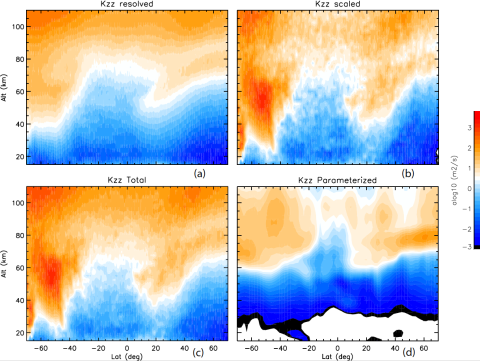
Effective vertical diffusion by atmospheric gravity waves
Han-Li Liu has observed that atmospheric gravity waves may transport heat and chemical species in the vertical direction.
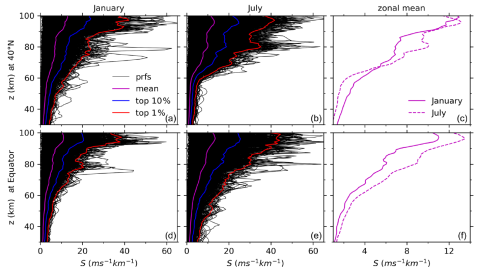
Gravity-wave-perturbed wind shears derived from SABER temperature observations
Large wind shears around the mesopause region play an important role in atmospheric neutral dynamics and ionospheric electrodynamics. Based on previous observations using sounding rockets, lidars, radars, and model simulations, large shears are mainly attributed to gravity waves (GWs) and modulated by tides (Liu, 2017).
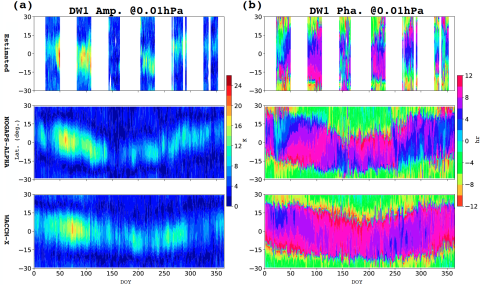
Day-to-Day Variability of Diurnal Tide in the Mesosphere and Lower Thermosphere Driven From Below
The migrating diurnal tide (DW1) is one of the dominant wave motions in the mesosphere and lower thermosphere. It plays a crucial role in neutral atmosphere and ionosphere coupling. The DW1 can vary over a range of time scales from days to years. While the long-term variability of the DW1 is mainly attributed to the source and background atmosphere variability, the driving mechanism of short-term DW1 variability is still openly debated.
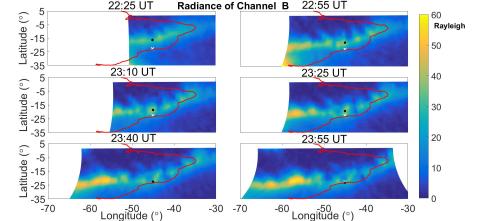
Observation of Postsunset OI 135.6 nm radiance Enhancement in South America by the Global-scale Observation of Limb and Disk (GOLD) Mission
The Global-scale Observation of Limb and Disk (GOLD) mission, for the first time, provides synoptic two-dimensional (2D) maps of OI 135.6 nm observations.

Alfvénic thermospheric upwelling in a global geospace model
First author, William Lotko, reveals that the CHAMP satellite orbiting near 400 km altitude near the magnetic cusp routinely traversed thermospheric density enhancements (up to 50%) that are not predicted by empirical models. The density enhancements are well-correlated with kilometer-scale field-aligned currents interpreted as ionospheric Alfvén resonator modes.
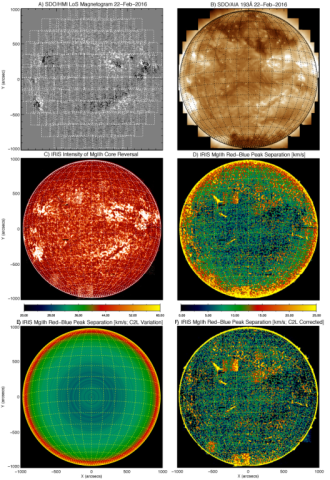
Detecting the Chromospheric Footpoints of the Solar Wind
Coronal Holes present the source of the fast solar wind. However, the fast solar wind is not unimodal—there are discrete, but subtle, compositional, velocity, and density structures that differentiate different coronal holes as well as wind streams that originate within one coronal hole. In this Letter we exploit full-disk observational “mosaics” performed by the Interface Region Imaging Spectrograph (IRIS) spacecraft to demonstrate that significant spectral contrast exists within the chromospheric plasma of coronal holes.
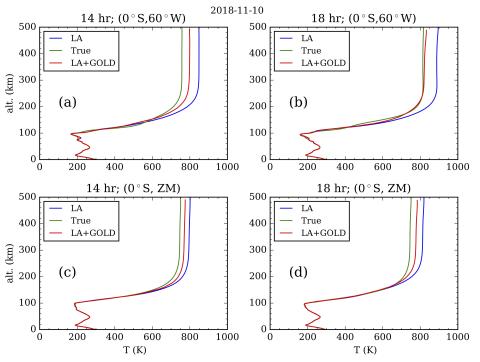
Impact of GOLD Retrieved Thermospheric Temperatures on a Whole Atmosphere Data Assimilation Model
The present investigation evaluates the assimilation of synthetic data which has properties similar to actual Global-scale Observations of the Limb and Disk (GOLD) level-2 (L2) and other conventional lower atmospheric observations. The lower atmospheric and GOLD L2 temperature (Tdisk) are assimilated in the Whole Atmosphere Community Climate Model with thermosphere-ionosphere eXtension (WACCMX) using Data Assimilation Research Testbed (DART).
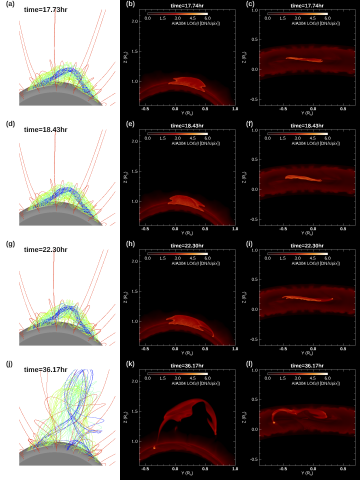
Simulations of prominence eruption preceded with large amplitude longitudinal oscillations and draining
We present magnetohydrodynamic (MHD) simulations of the evolution from quasi-equilibrium to eruption of a prominence-forming twisted coronal flux rope under a coronal streamer. The prominence condensations form at the dips of the twisted flux rope due to run-away radiative cooling.